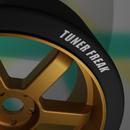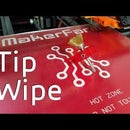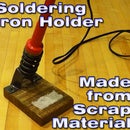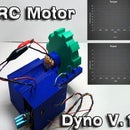Introduction: Convert Cheap RC to Lipos: Drug Store RC Part 1
Edit: After doing more research into MOSFETs I've found that the IRFZ44 (http://www.taydaelectronics.com/t-transistors/fets...) should be able to provide 10 amps of current at 5v versus only 4 amps from the IRF520 (please correct me if I have this wrong). If you build this circuit with the 520 and find it underwhelming I recommend replacing it with the Z44 and see if this fixes your problem. Pinout is the same for both.
Edit #2: I've swapped out the IRF520 in my current project with a IRL7833 (Amazon.com) and have had far better results.
This is the first part of a series of modifications fit for cheap, drug store RC cars and trucks. Hobby grade RCs are nice, but they can be quite expensive. You can pick up a RC car or truck for less than $20 at a supermarket, toy store, or drug store, but they're typically slow and have poor handling. However, with a little ingenuity and a few bucks we can turn a cheap RC into a fast RC. We'll start with the power delivery.
Arguably the biggest weakness of these cheap RCs is the electronics, they aren't capable of carrying very much current. I've toyed with these lower quality RCs since I was 14, and from my experience they'll handle just under double the stock voltage if you stick with NIMh batteries (ex. swapping out a 3AA battery holder for a 5AAA holder), but I've yet to see one that can handle the current delivered from lithium batteries. The obvious solution to this was to limit the current being delivered to the esc, but this would also limit the current to the motor, which would more or less defeat the purpose of the upgrade. So we need a solution that will provide lower voltage, steady power to the electronics, but will still allow full power to be delivered to the motor. This is where the linear voltage regulator and the MOSFET come in.
When controlling a motor, the first idea which comes to mind is the h-bridge circuit. Made up of one pair of p-channel MOSFETs and one pair of n-channel MOSTFETs, this circuit allows for bidirectional motor control. However, in this Instructable we will look at an even more simple design using a single n-channel MOSFET as a simple switch. In conjunction with a LM7805, we can construct a circuit which will allow us to run lipo batteries, but at the cost of the reverse function. A full h-bridge write up will be coming soon.
So why would we want to sacrifice our reverse control? There's a few circumstances in which this may be beneficial. First, it's cheap. Minus the cost of the lipo batteries and the heat sink which I already had, this board cost less than a dollar to build. Second, in the case of this car and some others, there may not be enough room to incorporate a full h-bridge circuit without heavily modifying the chassis. Finally, there is a small voltage drop across each MOSFET due to the on resistance of the component. With an h-bridge the current passes through two MOSFETs on its way to ground, so if both MOSFETs have the same on resistance this circuit will double the voltage drop over using a single component and as such will reduce the power delivered to the motor.
Now, without further ado, let's take a look at how to build this circuit.
Step 1: Materials and Tools
For this project we'll need the following:
Materials:
- LM7805 (http://www.taydaelectronics.com/ic-integrated-circ...)
- IRF520 (http://www.taydaelectronics.com/t-transistors/fets...) {IRF3205 has a lower on resistance and is only a few cents more expensive from the same site. I used the 520 because I didn't notice the 3205 before ordering}
- 2 510 Ohm Resistors (http://www.taydaelectronics.com/resistors/1-4w-car...)
- 22 AWG Wire (http://www.taydaelectronics.com/hardware/cable-wir...)
- Prototyping Board (http://www.taydaelectronics.com/hardware/prototypi...)
- Solder
Tools:
- Soldering Iron
- Knife
- Wire Strippers
These are the batteries I used for this project (https://www.amazon.com/gp/product/B00LK0DY3O/ref=o...). At the time I'm writing this I don't think they're available, but there's similar ones available and I've had these batteries for over a year and they're still working well. I've never tried the included charger but I recommend buying a set that includes a charger so that you've got the female plugs. I used a heat sink on the LM7805 because it was getting hot to the touch during bench tests, but upon further testing and measurement it doesn't appear to get anywhere near the maximum operating temperature, so I'd say it's optional.
Step 2: Building the Board
When planning the physical layout of the board, remember to take into account how much space you have available under the body of your RC. Every RC car and truck is different, so for this reason I only included the schematic and not a physical layout. Cutting the prototype board to size can be easily done by taking a sharp knife and scoring along the nearest line of holes, this will create a weak spot in the board which will act similar to a perforation. To snap the board in two I recommend taking a pair of pliers, line up the straight edge of the tool with the line you scored, and slowly bend the board until it breaks. A steel file or piece of sandpaper can be used to smooth the edge of the board.
If you decide to use a heat sink on either the regulator or the MOSFET, I recommend attaching them before soldering. This will help to keep the components from overheating during soldering. But again, from my tests they aren't required. If you're still unsure or plan on running a hot motor I'd recommend assembling the circuit on a breadboard and taking some measurements before assembling the final circuit.
Step 3: Installing
Installing the control board will vary from car to car, so I won't do a detailed description of how to install it in this particular model. Just remember, install the board in a place where none of the board's contacts will be shorted against other contacts on the control board or the main electronics. Also keep in mind that the metal backing of each component on the control board is connected to one of the pins, so make sure these aren't creating shorts either. In my case I also had to replace the motor wires with longer ones in order to get the packaging right.
Once you've installed the board, charge up the lipos and give it a go! Keep in mind not to run it too long, you'll likely overheat the motor before the batteries run out. With the car I have on 600mAh batteries I can run for about 20-30 minutes on a single charge.
Use this simple little board to breathe new life into and old RC and let me know how it goes in the comments below along with suggestions for what to upgrade next! Thanks for checking out my Instructable, and if you liked this one go check out my others!













